Figurative testimonies from across the territory, from the 15th to the 19th century
The gallery exposition, enriched with further purchases, loans and deposits, shows just how over the centuries figurative culture evolved in the Garda area, highlighting the particular local characteristics to be found due to the interplay of various influences deriving from its special geographical position as a borderland.
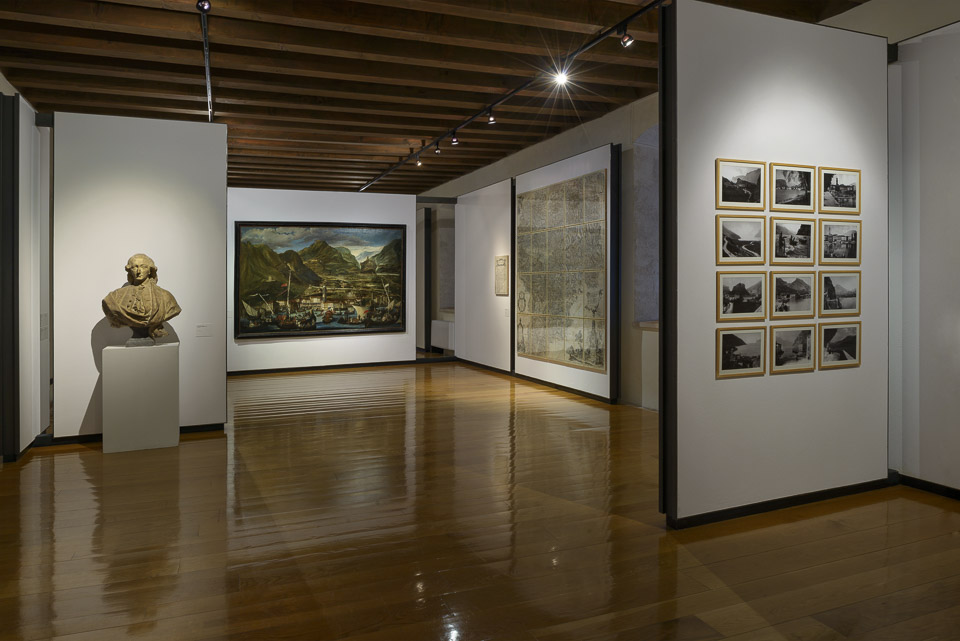 |
The works on display range from the gothic era (as represented by charming frescoes from the Riva del Garda Town Hall, and the evocative shrine of Rigino di Enrico), to the Renaissance, with the rise of the courts of Nicolò d’Arco in Arco and Bernardo Clesio in the Rocca di Riva (Riva Fortress), with works by the artist who mysteriously signed himself simply as FV (dated to around 1530 - 1532) and the sculptor Maffeo Olivieri (1484 - 1543). The exhibition then moves through the commotion of the counter-reform years (as testified by the great painting by Elia Naurizio (1598 - 1657) showing the Allegory of the Triumphant Church), before coming to the Baroque age, which in Riva del Garda is inevitably equated with one of the great names of Italian 17th-century painting: Pietro Ricchi of Lucca, who created the decorations of the Santuario dell’Inviolata (Sanctuary of the Virgin Mary). | |
| The 16th-century grotesque decoration to be found by the first window to the west is worthy of special note: it is the only fresco testimony of the various restructuring works to which the building was subjected. As a matter of fact, in this period the Rocca, thanks to the works carried out by the bishop prince Bernardo Cles (who chose it as one of his many abodes), changed its appearance from fortress into Renaissance residence. |
||
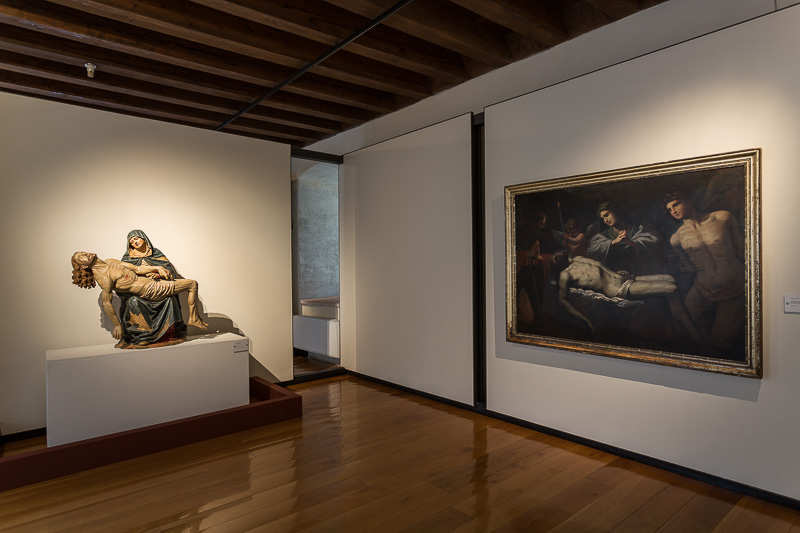 |
Monogrammista FV As part of the Madruzzo patronage, we find the mysterious Monogrammist FV, who signs and dates the two altar-pieces from the Disciplina church, depicting the “Adoration of the Shepherds” (1530) and the “Weeping over Christ’s Dead Body” (1531). Both include a strong Lombard stylistic component together with references to explicitly Nordic tastes in the choice of background. Of the unknown painter, active in the south-west Trentino region in the 4th decade of the 16th century, only three other works are known, and these are held in the churches of St. Anthony the Abbot in Ville del Monte, in Caneve and in Salò cathedral. |
|
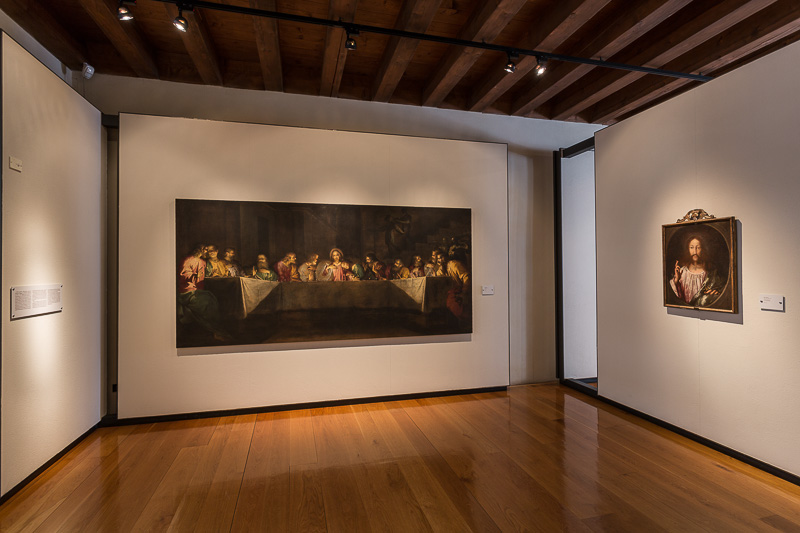 |
Pietro Ricchi A versatile and fascinating artist, pupil of Domenico Passignano and Guido Reni, Pietro Ricchi (1606 – 1675) travelled a great deal, enhancing his artistic training with a number of experiences, and coming into contact with some of the most important pictorial currents in Northern Italy in the first half of the 17th century. For example, his first stay in Lombardy let him get to know the painting of Morazzone, Cerano, Procaccini and Crespi among others, while in the Veneto region he came across Sebastiano Mazzoni and above all the school of the “Tenebrosi” and the luminist research that they were carrying out at the time. As a young man, he also lived for a short while in France, which accounts for the extraordinary use of colour to be found in many of his works, typical of the transalpine school. He also worked a great deal in Trentino, one of his masterpieces being the decoration of the Church of the Virgin Mary (1644), as well as a series of important commissions, including the lost altarpiece for the main altar of the Parish Church of Riva del Garda. Around 1645, he painted his Last Supper for the refectory of the Convent of the Virgin Mary, a splendid example of luminist painting, in which the nocturnal setting is livened up by a range of different light sources which underline the bold colour combinations of the robes of the Apostles, as well as illuminating their faces in such a way as to give each one a different expression. The rooms of the Picture Gallery are also embellished with other masterpieces by Ricchi such as his Guardian Angel, dated to the middle of the 1660s, the four little paintings depicting the martyrdom of St. Agnes, part of the painter’s last works, and the canvas featuring Cleopatra, an example of that rich production based on themes inspired by the ancient world or the Bible, painted on a private commission basis. |
|
|
The neoclassical period is represented in the Picture Gallery by one of the greatest exponents of the Trento region: the Riva-born Giuseppe Craffonara (1790 - 1837), while the Romanic age is marked by the notable collections belonging to the poet Andrea Maffei (1798 - 1885), which included important works by artists such as Francesco Hayez, Vincenzo Vela, Giuseppe Canella, and which may now be viewed in the Picture Gallery. |
||
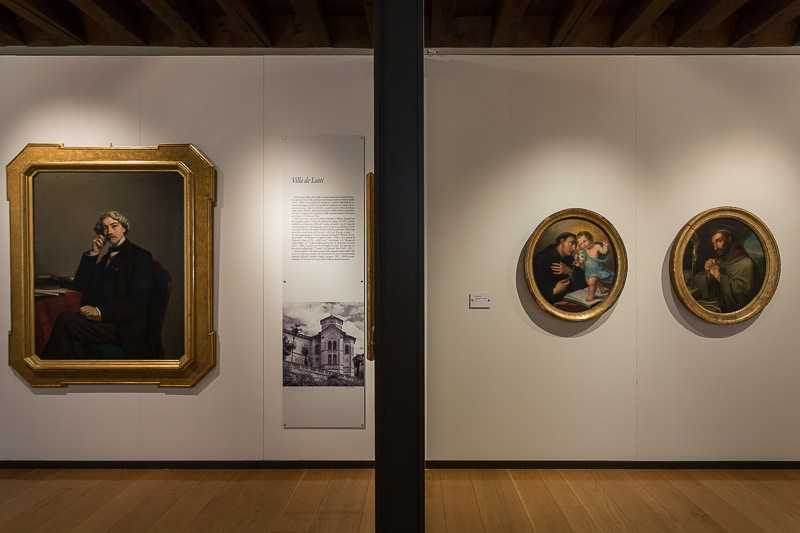 |
Giuseppe Craffonara Craffonara was the most important artist in Trentine neo-classicism. After his early days in Verona, during which he studied at length and imitated the great masters such as Raphael and Paolo Veronese, he went to Rome where he attended courses at the Academy of St. Luke and the School of the Nude, producing copies, largely for foreign travellers, who found it ever more difficult to get hold of authentic classical masterpieces. Despite coming into contact with the avant-garde consisting of the movement of the Nazarenes, his work was always carried out in the field of classical academism, akin to the painting of Antonio Canova and Vincenzo Camuccini. During his time in Rome, he also became close friends with the philosopher Antonio Rosmini. His attribution of a recognised role on the artistic scene of the Empire is shown by the proposal made to him to head the Academy of Fine Arts of Prague, yet which the artist was forced to refuse for reasons of health. Among the works on show here are a number of nude drawings, held at the Castello del Buonconsiglio. Monumenti e Collezioni provinciali, from which we may observe the first steps of the academic development that Craffonara was to make at the School of the Nude in Rome. The painting of the Death of St. Joseph is from the painter’s home in via Florida in Riva, a work he painted on the ceiling of his room shortly before his death. The work, removed during the renovation work carried out on the building after its being seriously damaged in air raids during the First World War, was transferred onto canvas, and donated to the Museum by the Bettinazzi family, the current owners of the building. There is also a small square in Giuseppe Craffonara’s honour, next to the arch-priest church, designed by the architect Giancarlo Maroni and opened in 1930, where there is also a statue of the artist by Francesco Trentini da Lasino. |
|
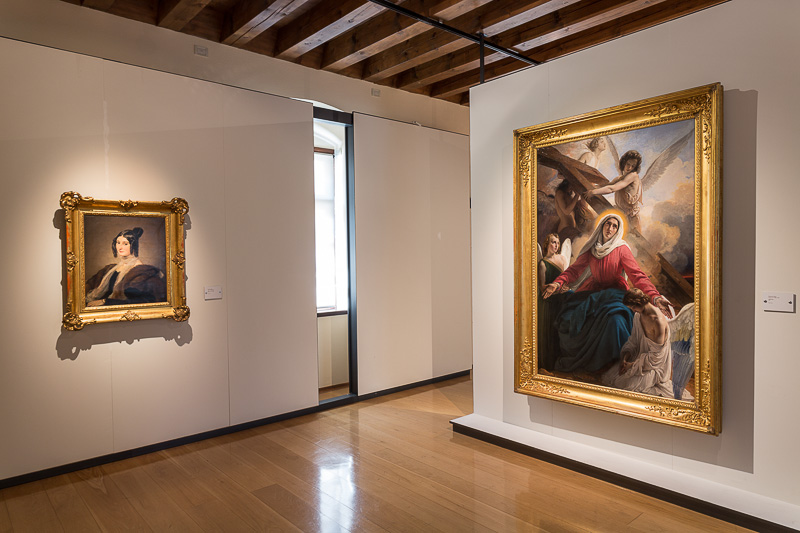 |
The 19th century in Riva del Garda The 19th century in Riva del Garda was characterised by great cultural ferment, thanks to the presence of the Trentine man of letters Andrea Maffei (1798 - 1885), whose ability as a translator, critic and collector went far beyond the limited provincial borders to open up a little more European scope. He was involved in the movement that set out to break the moulds of classical celebratory painting and sculpture which paved the way to the creation of masterpieces of artistic maturity such as those of Francesco Hayez and Vincenzo Vela. After having set up a literary circle in Milan, which included many of the key artists and men of culture of the day, in 1851 he rented lodgings in Riva del Garda, coming into close contact with the de Lutti family, to whom he donated his great art collection made up “...of over 140 oil paintings, many of which of great value given their age or the name of the artist, and all of great beauty…”. The works on display here all belong to that collection, including the Portrait of Andrea Maffei by Michele Gordigiani (1830 - 1903), the two paintings by Francesco Hayez (1791 - 1882) along with the Addolorata and the Portrait of Clara Maffei, the View of Riva del Garda by Ambrogio Fermini (1811 - 1883), the painting featuring The de Lutti Family by Luigi Sacco and the sculpture depicting the Orante by Vincenzo Vela (1820 - 1891). Andrea Maffei had asked to be buried in the private chapel of Villa de Lutti, a delightful example of architecture from the Risorgimento period, designed by the architect Antonio Negrin Caregaro (1821 - 1918) and commissioned by Vincenzo de Lutti, father of the poet Francesca. |
|
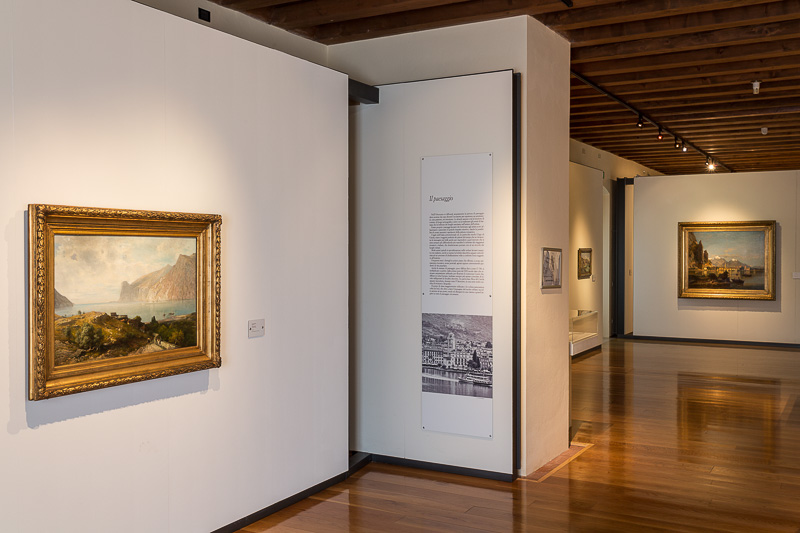 |
Landscapes A special space is set aside for the display of works on the Garda landscape through topographical maps, as well as through highly evocative drawings and paintings documenting the evolution of landscape imagery, from the 18th-century analytical description up to a fully-fledged Romantic interpretation of the lake and its surrounding area. During the 19th century, landscape painting became extremely popular wherever it could be used to describe a particular sentiment, a passion or an emotion. The background thus took on the role of the frame, of the scenery, against which the elements of fantasy were placed as aroused in the soul of the artist by the beauty of the landscape. And it was often the lakeside landscape that provided many artists with such fascinating views and panoramas of the necessary emotional impact, making it possible to produce outright masterpieces of Romantic painting. The lakes of Northern Italy, Lake Garda first and foremost, were the favourite subjects of the painters of the day, who would depict the most beautiful views also in response to the growing market of both foreign and Italian travellers who wished to take home with them a souvenir of the places they had visited. Thus many artists came to specialise in realist lakeside panoramas, although the descriptive accuracy seems often to have taken second place behind an idealisation process aimed at conferring greater suggestive strength to the work as a whole. It is quite common to find details in the foreground of highly evocative effect, featuring scenes from the dock, from town fetes, or the more conventional paintings of everyday life. Landscape prints, which had been uncommon throughout the 18th century, also started to gain in popularity in the first half of the 19th century, as they were also used widely to illustrate the numerous guidebooks throughout Europe which ever more frequently included pages depicting the destinations described. Riva del Garda in particular may be seen in a wide range of engravings and lithographs throughout the 19th century. The most commonly exploited vantage point is the panoramic view from the South, which as well as showing the town spreading out around its port, would tend to provide a wide-angle panorama of all the surrounding landscape. |
|




